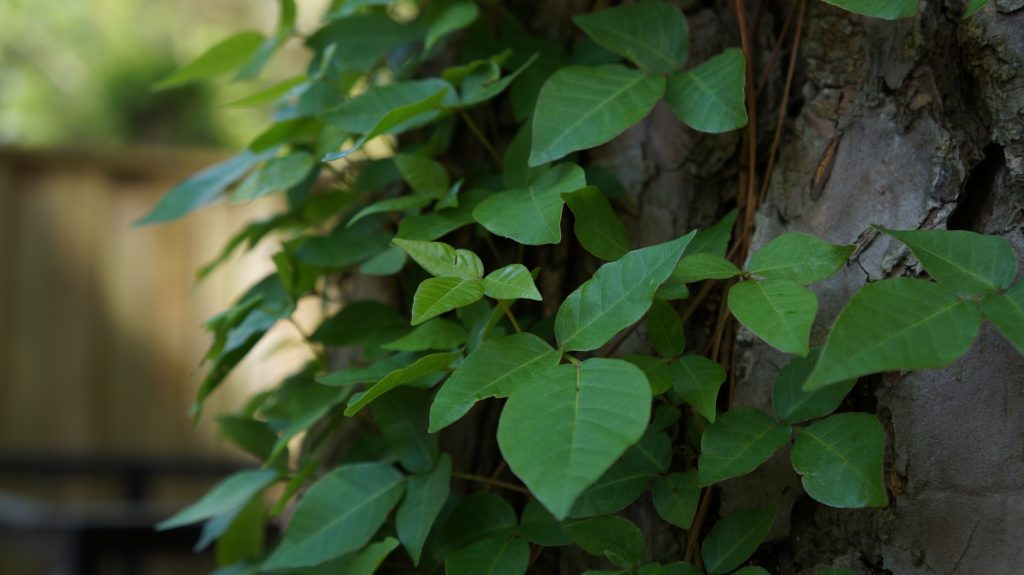Avoid The Itch By Knowing What Poison Ivy Looks Like
 One of the most beautiful plants in the garden or forest also happens to be one of the most toxic. Most people do not want to admit that Poison Ivy is actually a very pretty plant. Painful rashes tend to do that to people. But when you consider the green-reddish leaves, the white dangling flower and the white berries that follow, and then the brilliant red fall color, it is not hard to admire this plant with a sinister dark side.
One of the most beautiful plants in the garden or forest also happens to be one of the most toxic. Most people do not want to admit that Poison Ivy is actually a very pretty plant. Painful rashes tend to do that to people. But when you consider the green-reddish leaves, the white dangling flower and the white berries that follow, and then the brilliant red fall color, it is not hard to admire this plant with a sinister dark side.
After spending all day either working in the garden or hiking in the woods and now, the itching has started. You have probably come in contact with Poison Ivy (Toxicodendron radicans) and didn’t even realize it.
How do you prevent this from happening next time? By learning how to recognize Poison Ivy.
Recognizing Poison Ivy can be tricky because it looks a little different in all four seasons. Unfortunately no matter what the season, the oils on the plants can always be an irritant.
Poison ivy leaves can present as smooth-edged, or wavy or jagged, and can also appear either waxy and shiny or dull. Additionally, they may be perceived as hairy or be completely smooth. Leaves will be roughly two to five inches long, with the center leaflet having a longer stalk than the side leaflets. In the springtime, they will blossom with very small white flowers. Over the course of the summer months, the plant will produce greenish berries. In the fall, the plants leaflets will turn reddish and boast waxy, dense clusters white berries through winter.
Poison ivy usually has three broad, spoon-shaped leaves or leaflets (“Leaves of three? Let it be!”), but it can have more. It may grow as a climbing or low, spreading vine that sprawls through grass or as a shrub.
It is important to even be vigilant in the winter as the vines can even give you a rash. The vines appear “hairy” and can be on the ground, winding through shrubs, or climbing a tree.
Remember, Allentuck Landscaping Company is always here to help you design, install, construct and maintain you lawn and landscape. Give us a call!
Allentuck Landscaping Company is Your Residential Landscape Company
Phone: 301-515-1900 Email: info@allentucklandscaping.com
At Allentuck Landscaping Company, our mission is to create beautiful environments for people to enjoy. We see landscaping as a way to improve people’s lives.
The Allentuck Landscaping Company team has been delighting homeowners in Maryland, Washington DC and Northern Virginia for over 28 years with our turnkey approach to landscape design, installation, construction and maintenance. Most companies try to serve many types of customers at the same time; homeowners, shopping centers, office buildings and the list goes on. At Allentuck Landscaping Company, we focus on one customer, you, the homeowner. We have a singular focus on bringing you the best landscape practices, the best customer service, and the best value for your home.
Services Provide – Master Landscape Plans, Complete Maintenance Programs, Plantings, Patios, Walkways, Retaining Walls, Water Features, Outdoor Lighting, Outdoor Kitchens, Trellises & Pergolas, Irrigation Systems, Drainage Solutions, Grading & Sodding. Fire Pits & Fire Places, Spring Clean Ups, Decks, Fences
Areas Served – Chevy Chase, Bethesda, Potomac, Rockville, North Potomac, Darnestown, Gaithersburg, Germantown, Damascus, Boyds, Clarksburg, Ijamsville, Urbana, Frederick and Washington DC.

